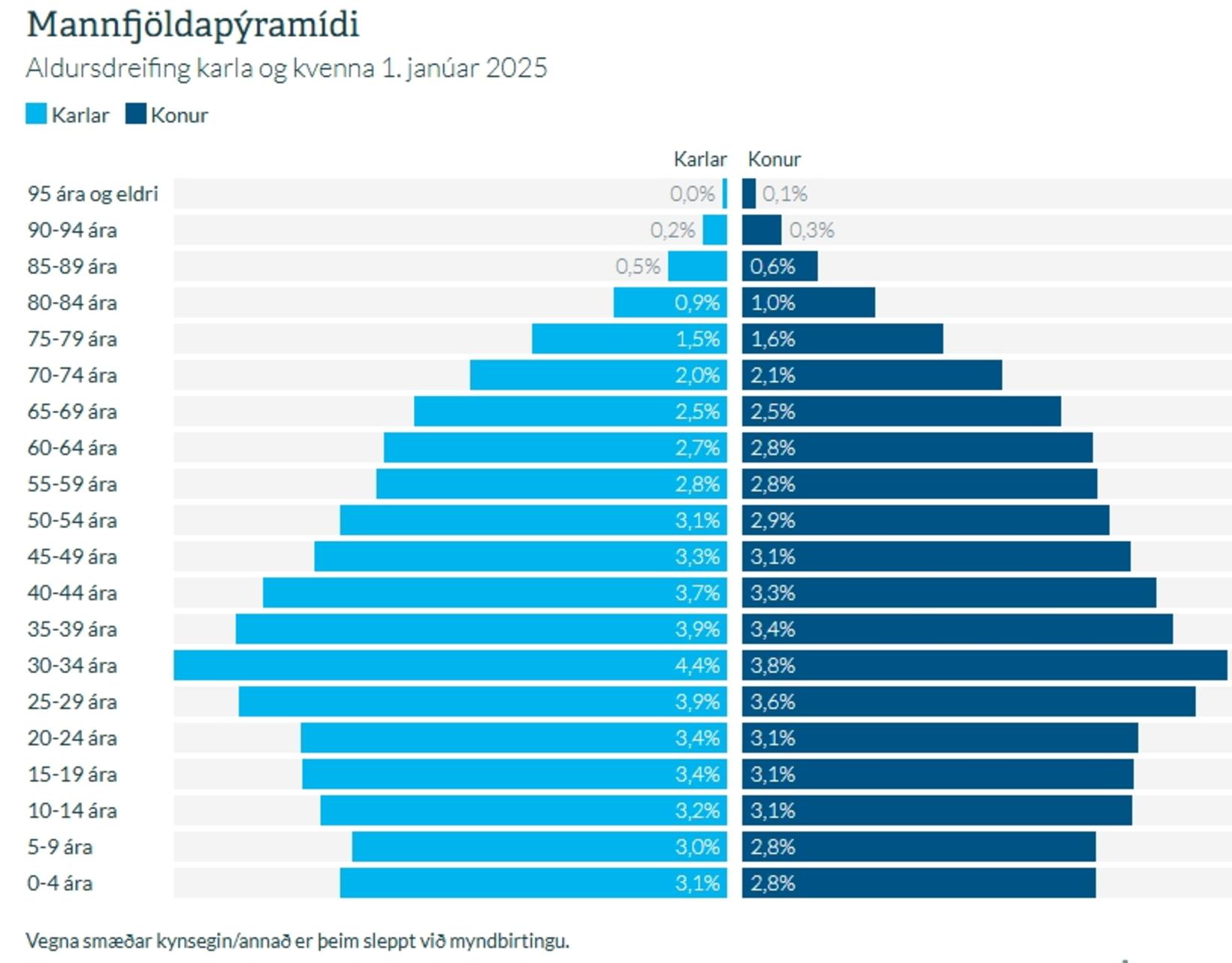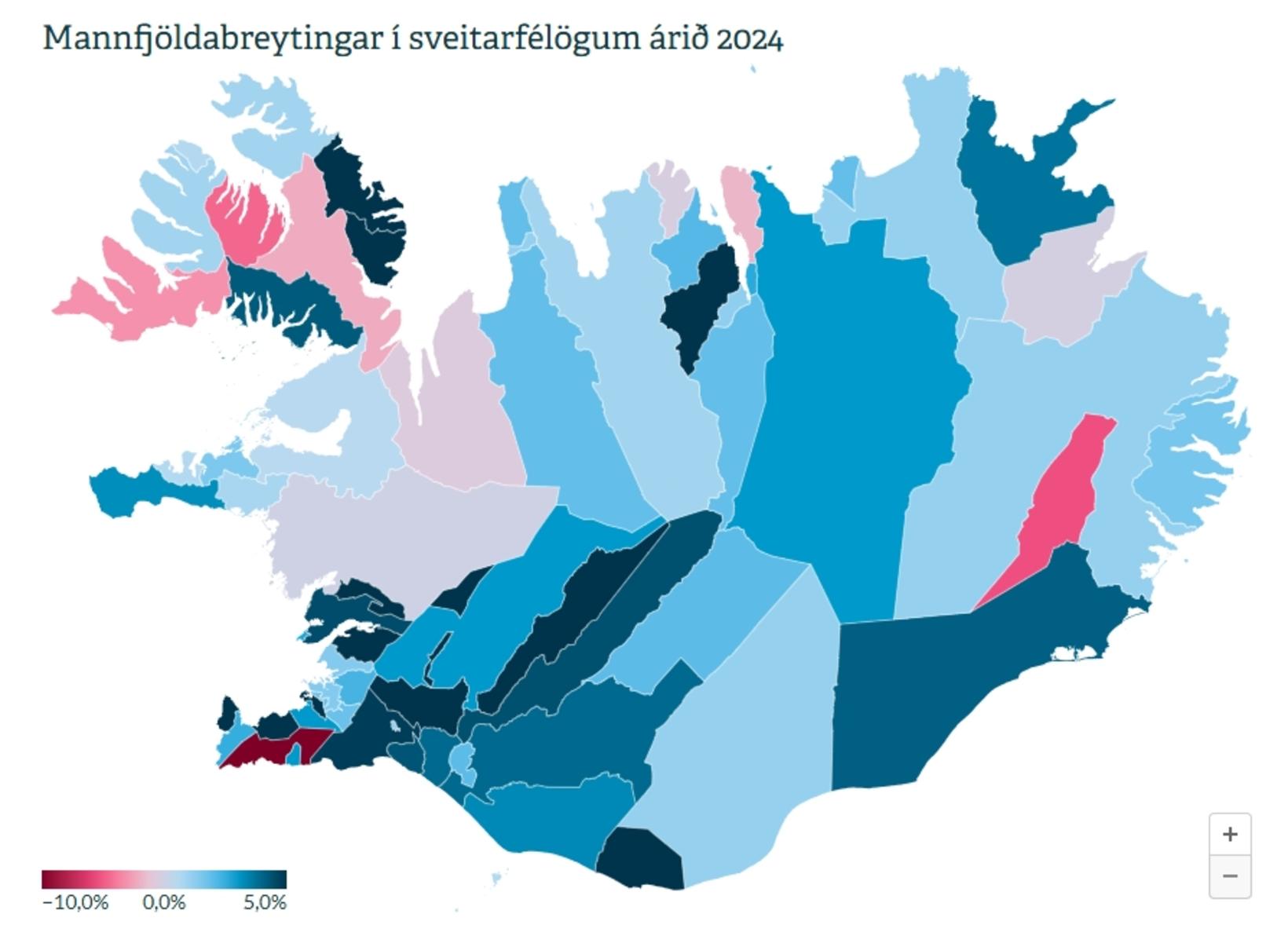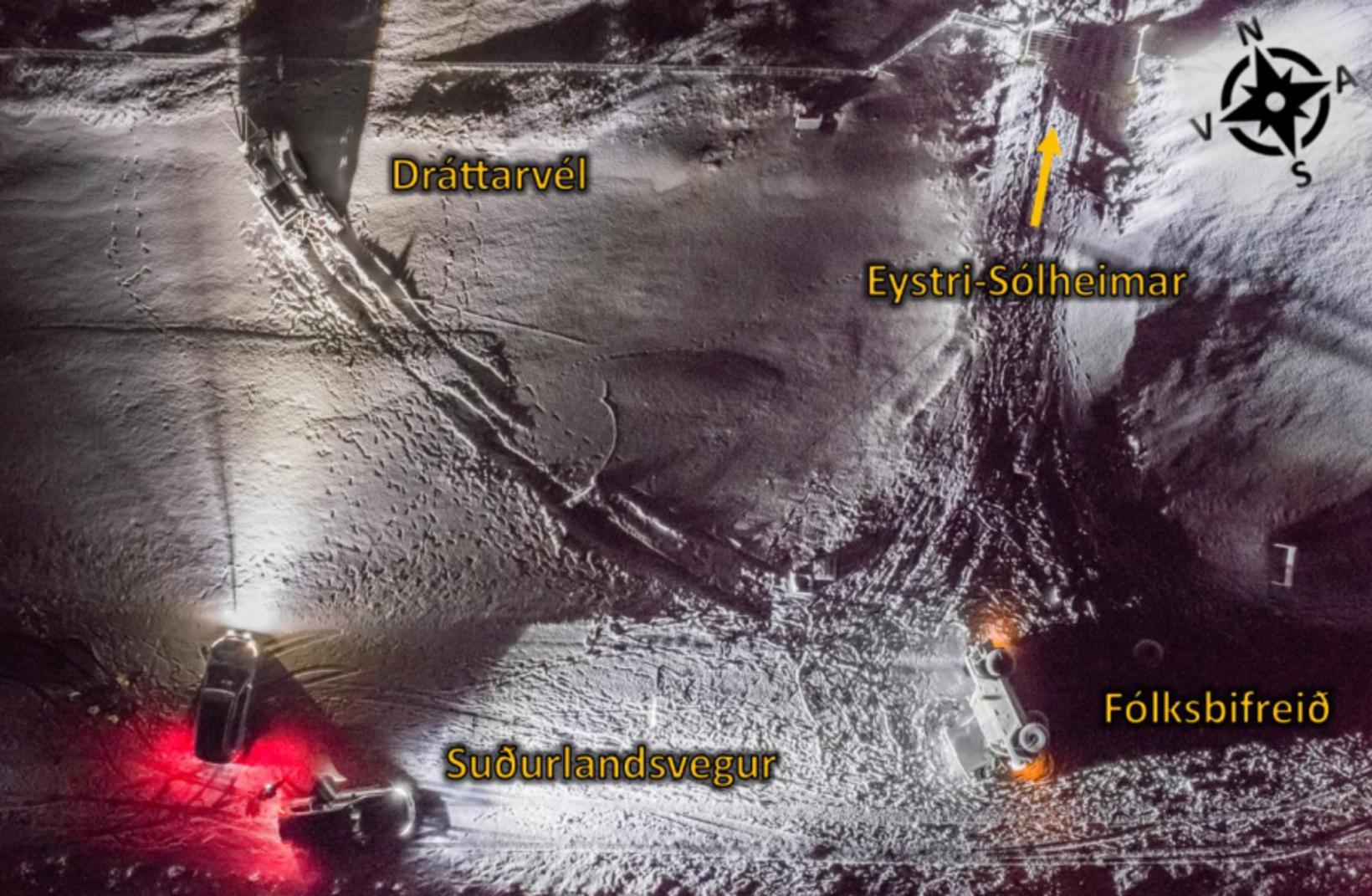Children decreased but older people increased

The population in Iceland was 389,444 on January 1, 2025, according to Statistics Iceland's new estimate, and the population had increased by 5,718 from 1 January 2024, or by 1.5%.
This is stated in the notification from Economy But it says that in total 199,622 men, 189,623 were women and 199 sexes/other resident in the country at the beginning of the year, increasing the number of men by 1.6% from the previous year, women by 1.4% and gender/other by 25.2%.
According to figures from Register The number of registered population in the country is 406,847. Men are 210,939, women 195,702 and the number of 206. These numbers Build on the legal domicile registration of individuals in the National Register and update once a day. Statistics Iceland, however, updates its figures on various other grounds and use, among other things, whether people pay taxes in this country and use public services.
The percentage of the elderly never been higher
Statistics Iceland's announcement states that in recent decades, the age composition of the population has changed considerably.
« In general, the number of children has decreased proportionately, but older people have increased. The support rate is, on the one hand, calculated as the proportion of the elderly (65+) by people of working age 20-64 years and, on the other, as a proportion of children and young people (0-19 years) of the same group. Over the past ten years, the proportion of people aged 0-19 years has decreased from 46.6% to 40.7% of people of working age, while the proportion of the elderly (65+) has increased from 23.3% to 26.5% and has never been higher, « the announcement says.
Proportional population growth most in South Iceland
In the capital area, 4,877 lived on January 1, 2025 than a year ago. This is equivalent to a 2.0% increase in population in one year. Proportional population growth was highest in the South, with an increase of 3.5% last year and in the West, where the increase was 2.0% between years.
In other parts of the country, the number of population was below the national average. In the North East, the number increased by 1.4%, in the East increased by 1.2%, in the North West by 0.8%and in the West Fjords by 0.1%. However, the population of the Suðurnes decreased by 4.4%, and this decrease is mainly due to transport from Grindavík in 2024.
62 municipalities
Municipalities in Iceland totaled 62 on January 1, 2025, and had decreased by two from the previous year. Reykjavik was the most populous municipality with 138,772 inhabitants, while Tjörneshreppur the smallest municipality with 53. A total of 27 municipalities had fewer than 1,000 inhabitants, four of them with fewer than 100 inhabitants. In eleven municipalities, there were 5,000 or more residents.








